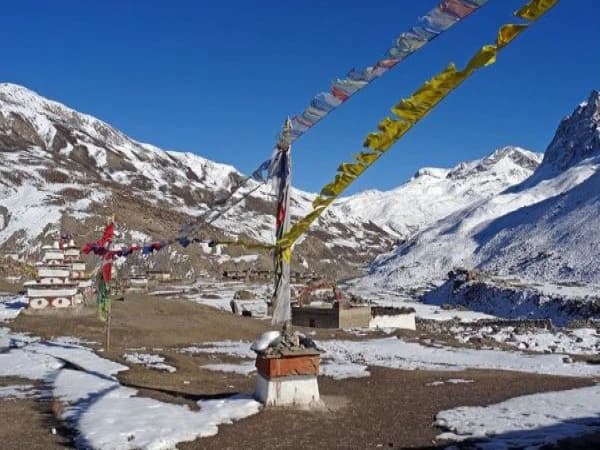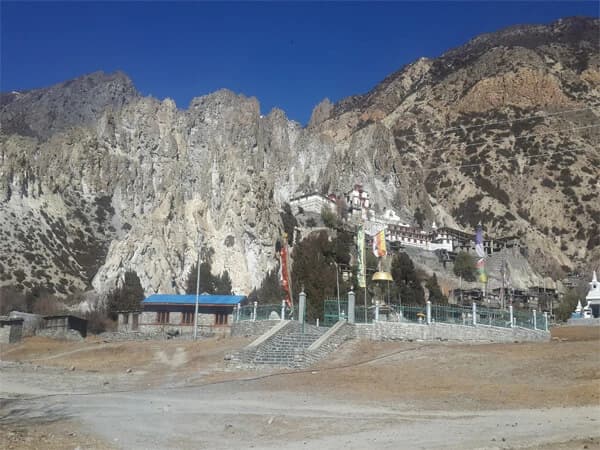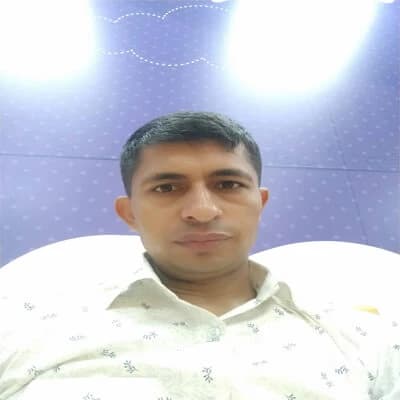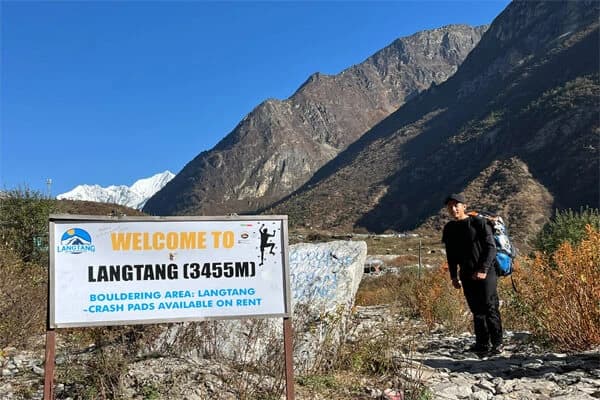Budgeting is a major factor if you are considering the Lower Dolpo trek. Unlike the well-traveled Everest or Annapurna routes, this stunning and secluded trip in western Nepal is unique., The Lower Dolpo trek price may be more than that of other Nepali treks due to its distance from major cities. However, the experience is well worth the money.
You can take a walk through serene valleys, historic towns, and breathtaking mountain scenery in Lower Dolpo. Visit the stunning Phoksundo Lake, traverse steep passes, and observe Tibetan-style culture. It is serene, untamed, and exciting adventure.
A government-licensed guide, specific permits, and occasionally even camping equipment are required because the area is a restricted area. To get to the starting point, you'll also need to take domestic flights.
Why budget for Lower Dolpo Trek Matters?
You can make informed plans for your dolpo trek if you are aware of all the expenses, including permits, airfare, guide fees, food, and accommodation. Knowing the Lower Dolpo trek costs in advance can help you make the most of your adventure without any surprises, regardless of your budget or preference for a more pleasant trip. This trek is ultimately a unique and powerful Himalayan experience, and it is made much better by careful budgeting.
Dolpo Trekking Permit Fees
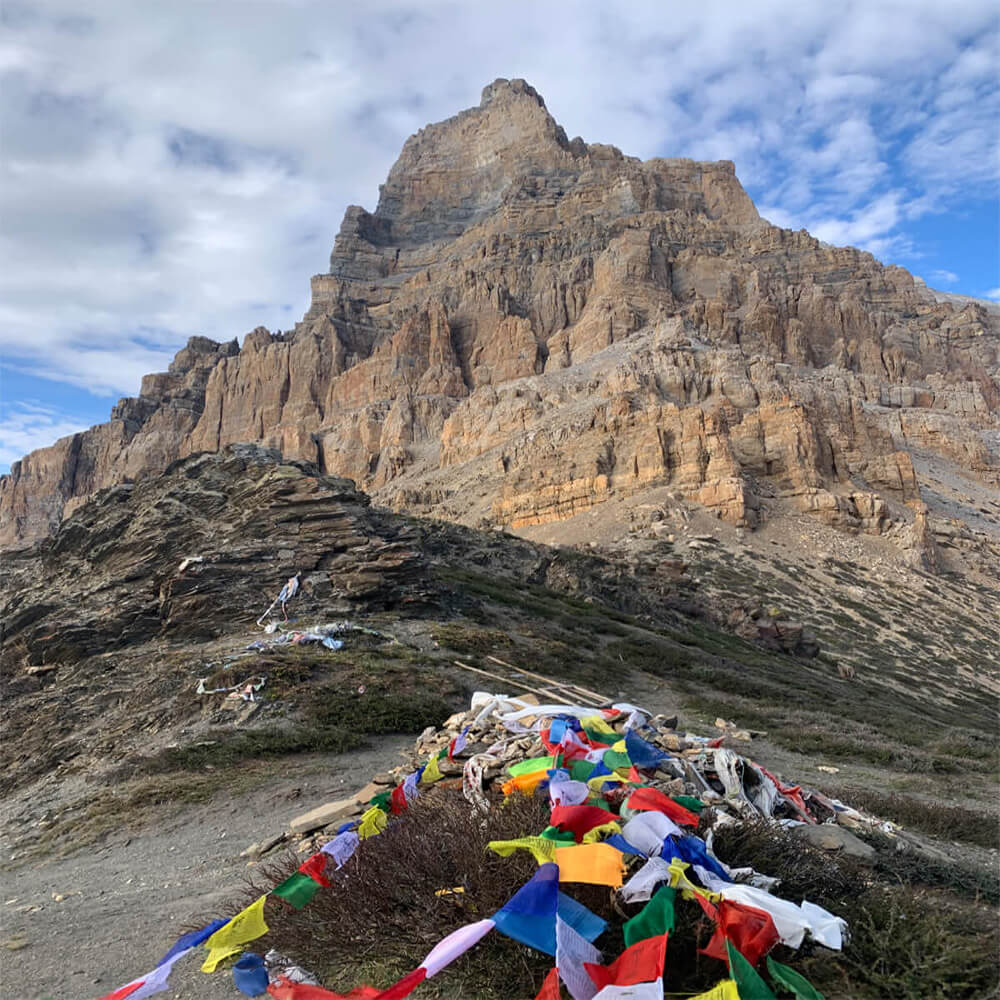
Before beginning your expedition, you must obtain a few unique licenses if you wish to walk in Lower Dolpo. Because Lower Dolpo is located in a restricted area of western Nepal, the government needs licenses to manage tourism and save the ecology and culture. Let's review the primary permits you will require in 2025 together with their associated costs.
Dolpo Restricted Area Permit cost
This permit is required because the Lower Dolpo trek go through restricted trekking areas. A minimum of one week is required, and the cost is USD 20 per person per week. You will be charged more for the extra days of your trek if it lasts longer than seven days in the restricted area.
Example: If your trek through the restricted section lasts 10 days, you will pay for two weeks, which is USD 40.
You cannot trek here alone; you must be accompanied by a qualified guide and apply for this permit through a registered trekking service such as Nepal Trekking Routes.
Shey Phoksundo National Park Entry Permit
One of Nepal's most stunning protected places, Shey Phoksundo National Park, is traversed by a large portion of the Lower Dolpo path. A national park permit must be purchased in order to enter the park.
- Shey Phoksundo National Park Entry Permit Cost: NPR 3,000 (about USD 25) per person
You can purchase this permit at the park gate or in Kathmandu. This charge supports the park's local culture, animals, and woodlands.
No TIMS Card Required for Lower Dolpo Trekking
A TIMS (Trekkers’ Information Management System) card is required for the majority of Nepal treks. But since you already need a special restricted area permit and need to be accompanied by a guide, TIMS is not necessary in Lower Dolpo. This reduces paperwork and saves you a little money.
How to Get the Lower Dolpo Trekking Permits
Every permit needs to be obtained by a trekking agency that is registered with the government. You must supply a current passport and visa, two pictures the size of a passport, your schedule for the trek, and details of a licensed guide. Usually within a day or two, the agency will take care of your application process.
Obtaining the appropriate permits may seem like a lot, but it's crucial for environmental preservation, legal travel, and your own safety. You may visit one of the Himalayas' most unexplored areas with just a few documents and the assistance of a local trekking agency.
Transportation Cost to Dolpo
Part of the adventure is getting to Lower Dolpo. It takes some time, preparation, and money to get to the trek's beginning point because it's one of Nepal's most isolated areas. Traveling from Kathmandu to Nepalgunj and then from Nepalgunj to Juphal (Dolpo) will require you to take at least two flights.
Kathmandu to Nepalgunj Flight
Flying from Kathmandu to Nepalgunj, a city in southwest Nepal, is the first step in your tour. Because there are no direct routes from Kathmandu to Dolpo, the one-hour flight is crucial. Cost of one way flight is around $120 to $150. Many flights leave every day, however during the hiking season, reservations should be made in advance.
Nepalgunj to Juphal Flight
You will take a smaller airplane to Juphal Airport in Dolpo from Nepalgunj. The primary entry point for the Lower and Upper Dolpo treks is this airport. The breathtaking vistas of deep valleys, snow-capped peaks, and verdant hills can be seen during the approximately 45-minute trip. Cost of one way flight is around $120 to $130. Plan for additional days because weather frequently causes these flights to be canceled or delayed.
Round-Trip Airfare Estimate
The total cost per person would range from $450 to $500 if you are purchasing round-trip flights for both sectors (Kathmandu–Nepalgunj and Nepalgunj–Juphal). This comprises:
- Kathmandu ↔ Nepalgunj
- Juphal ↔ Nepalgunj
A minor airport tax, which is often covered by the ticket price, may also be required.
Alternative Options: Jeep or Bus
Rarely, some trekrs attempt to travel the road to Dolpo. To go to the district of Dolpa from Nepalgunj, you can take a long jeep ride or a local bus, but the trip is incredibly slow, uncomfortable, and unreliable because of landslides and poor road conditions. It takes 2 to 3 days by Jeep or bus. The cost may be less expensive (between $50 and $80), but the challenge not worth it. For safety, speed, and comfort, the majority of trekkers opt for flight.
Advice: Use Your Trekking Company to Book Flights
You may save time and lessen your worry by arranging your flights in advance with our agency. Due to the restricted number of flights to Juphal, reservations should be made well in advance.
Lower Dolpo Trek with Guide and Porter
In addition to being beneficial, having a guide is mandated by the Nepali government for hiking in Lower Dolpo. Due to the restricted location, guides assist you in obtaining permits, ensure your safety, and guide you through the isolated paths. To make the trip easier, many trekkers also use porters to carry their bulky luggage.
Why You Need a Guide in Lower Dolpo
 Lower Dolpo is a difficult and isolated place. The weather can change suddenly, the trails are less popular, and they can occasionally be unclear. A certified guide is familiar with the route and the conditions of the mountains. They can converse with villages and speak the local language, which will make your journey safer and more seamless.
Lower Dolpo is a difficult and isolated place. The weather can change suddenly, the trails are less popular, and they can occasionally be unclear. A certified guide is familiar with the route and the conditions of the mountains. They can converse with villages and speak the local language, which will make your journey safer and more seamless.
You cannot obtain the unique restricted area permits required to reach Lower Dolpo without a guide. Along the tour, the guide also assists with booking accommodations, transportation, and permits.
Guided Lower Dolpo trek price
In Lower Dolpo, a professional guide often charges between $30 and $35 per day. Their time, expertise, and leadership throughout the journey are all included in this cost. A full Lower Dolpo journey can take 15 to 20 days, and guides frequently work the entire time.
Keep in mind that hiring a guide is a significant investment in your fun and safety. An excellent guide can help you avoid altitude sickness, handle emergencies, and gain important knowledge about the local environment and culture.
Should You Hire a Porter?
A porter is a person who transports your bulky belongings, including your sleeping bag, backpack, and other equipment. Although it is not required, hiring a porter is strongly advised if you like to enjoy the trek without having to carry a large weight.
Porters often charge between $25 and $30 per day. Porters work the entire trek, much like guides do. They ease the physical strain so you may concentrate on strolling and taking in the scenery.
How to Choose Your Guide and Porter
Hiring trekking porters and Trekking guides from a reputable trekking organization, such as Nepal Trekking Routes, is the best option. These businesses employ qualified, seasoned guides who are familiar with the area. They also see to it that porters have decent pay and working conditions.
Inquire about your guide's background, language proficiency, and previous trekking seasons before making your reservation. A professional and amiable guide may greatly enhance your journey.
Food and accommodation cost in Lower Dolpo
Trekking in Lower Dolpo differs from more well-traveled trekking routes like Everest or Annapurna. There are fewer lodges and fewer dining options in this isolated area. That's part of the experience, but it also means you have to know what to anticipate in terms of price, cuisine, and comfort.
Simple and Basic Accommodation During the Lower Dolpo Hiking
You will stay in basic teahouses or homestays in the majority of the communities along the Lower Dolpo circuit. These may merely provide a simple room with a bed and blanket and are operated by local families. Don't count on private restrooms, hot showers, or electricity everywhere.
The cost of accommodation is approximately $5 to $10 per night. Private or shared rooms are available, depending on availability. There might not be a teahouse in some isolated places, therefore camping is necessary.
Carrying tents and other equipment is necessary if you plan to camp, and you will probably have to pay for the use of the kitchen or campsite at village stops.
Food Cost for Lower Dolpo Trek
Lower Dolpo cuisine is straightforward but filling. Dal Bhat, which consists of rice, lentil soup, and veggies, is the most popular dish. Noodles, potatoes, Tibetan bread, and tsampa (roasted barley flour) may also be present. Since meat is scarce and frequently not fresh, most trekkers eat vegetarian food. Meal prices range from $15 to $25 per day, depending on the place. Breakfast consists of tea, chapati or Tibetan bread, maybe porridge or eggs. Lunch/dinner includes potatoes, noodles, or daal bhat.
Food costs may increase with distance because of transportation challenges. Using supplies carried by mules or porters, your guide or a cook will prepare meals at camping areas.
Other Lower Dolpo Trek Price to Keep in Mind
Energy bars, almonds, and chocolate are difficult to get in Dolpo, so bring them from Kathmandu. It could cost more to boil water for drinking (about $1 to $2 each pot). As a treat, some villages serve yak butter tea or local tea.
Total Estimate for Food and Accommodation
You should budget between $25 and $35 a day on average for both food and accommodation. It is a basic experience, but one that is full of warmth, local flavor, and unforgettable mountain charm.
Trekking Gear and Equipment Rental
Lower Dolpo trekking is a true adventure. You will traverse high mountain passes, travel through isolated regions, and spend the night in rudimentary dwellings or tents. For your comfort and safety, it is crucial to have the appropriate equipment. Let's examine your needs and the potential costs of purchasing or renting the necessary items in Kathmandu.
Clothing for Cold and Windy Weather
The mornings and evenings are extremely cold, even throughout the summer. You will require a warm, thick down jacket, an outer shell that is windproof, thermal inner layers like: warm shirts and pants, a fleece jacket, t-shirts, trekking pants, Gloves, a scarf or buff, and a thick hat.
If you don't already have these things, you can purchase used equipment for reasonable prices or rent them in Thamel, Kathmandu, for around $1 to $2 per item each day.
Sleeping Gear and Accessories
You might be forced to camp or stay in very modest accommodations in some areas of Lower Dolpo, particularly those without teahouses. Thus, you will require a high-quality sleeping bag with a -10°C or lower rating, a mat or sleeping pad (if camping), an additional battery-operated headlight, water purification tablets and a water bottle. In Kathmandu, sleeping bags and mats can be rented for $1 to $2 per item per day or purchased for $50 to $100 overall, depending on quality.
Footwear and Trekking Poles
Strong, well-worn trekking boots with adequate ankle support and grip are essential for the Dolpo trek. On the walk, avoid wearing brand-new footwear as they may cause blisters.
Bring along Extra socks (not cotton, but wool or synthetic), Camp shoes or sandals for sleeping and support your knees on steep trails with trekking poles. Trekking poles can be purchased for $15–25 or leased for $1–2 per day.
Estimated Gear Cost for Lower Dolpo Trek
If all of your equipment is rented, $50–100 is the total rental fee for 2-3 weeks. If you intend to purchase a few things, spend between $150 and $300, depending on the quality and brands.
Be clever, but pack light. Make sure everything fits well and keeps you warm, and prioritize quality above quantity. Since there are no stores selling equipment in Lower Dolpo, you will have to make do with what you have once you begin walking. Your trek will be much more comfortable and secure if you prepare in Kathmandu.
Dolpo trek package cost: Budget vs. Mid-Range Trek
One of Nepal's most unique and isolated hiking routes is the Lower Dolpo Trek. This journey is more expensive than well-traveled routes like Annapurna or Everest Base Camp due to the region's restricted access and permissions. Nonetheless, you can arrange your vacation according to your travel preferences and degree of comfort.
Budget Trekking for Lower Dolpo
A budget trip is a fantastic choice if you're a traveler on a tight budget and don't mind basic amenities. You will simply need to bring the necessities, eat traditional Nepali food like dal bhat, and stay in modest tea houses or homestays. In order to split the cost of guides and porters, the majority of low-budget trekkers also go in small groups.
The Lower Dolpo Hiking paths wind through extremely rural areas where mules or porters are required to carry anything. This indicates that the accommodations and meals are modest but genuine. This look is both reasonably priced and incredibly fulfilling if you're adaptable and like rustic adventure. The budget trek package with guide, shared porter, and basic stay costs $1,600-$2,000.
Mid-Range Lower Doplo Trek Expenses
The mid-range journey is a great option for people who desire a little more comfort and individualized care. You'll have more control over the pace of your trek, a private guide, and perhaps even your own porter. When tea houses are not accessible, you may use organized camping or stay in better homestays, and meals may be more diverse.
Assistance with permits, flights, airport pickups, and occasionally hotel stays in Kathmandu or Nepalgunj are also typically included in a mid-range trip. You'll get greater support during the trip, which is beneficial in such a remote and elevated area.
Trekkers who like to concentrate on the experience rather than worrying about every little detail could consider this alternative. Additionally, it lets you go at your own speed, which is useful on long days of trekking. The mid-range trek package including private guide and more comfort costs from $2,200 to $2,800.
Which One Should You Choose?
Both low-cost and mid-range trekking options provide breathtaking vistas, cultural encounters, and the opportunity to explore one of the Himalayas' most stunning regions. If you're a self-sufficient and seasoned trekr, your budget might be sufficient. Choose something in the middle if you want more direction and comfort. Whatever you decide, Lower Dolpo is well worth the money because of its ageless attractiveness, tranquility, and purity.
Optional Expenses and Hidden Costs
There are more factors to consider when organizing a Lower Dolpo trek besides flights, permits, and guides. People frequently overlook a few additional expenses when creating their budget. These might not seem like much, but they can mount up over the course of a lengthy and isolated trek. This is what you should know.
Travel Insurance (Required)
Travel insurance that includes coverage for high-altitude trekking and helicopter emergency evacuation is required. Due to its rural location, Dolpo lacks large hospitals. Without insurance, evacuation can be highly costly in the event of an emergency.
The estimated price range for a decent policy is $100 to $150. Since many of the passes are high, make sure it covers trekking beyond 5,000 meters.
Total cost of Dolpo trek from Kathmandu
The total Cost for 15-Day Lower Dolpo Trek from Kathmandu is between $2,000 and $3,500 USD. This covers airfare, licenses, fees for guides and porters, lodging, meals, equipment rental, and insurance. Local businesses and group hikes can help cut costs without sacrificing the experience.
Best Time to Trek to Lower Dolpo for Budget Travelers

May to early October is the best time for Lower Dolpo trek. Due to its location in a rain shadow, Dolpo receives less rainfall than other regions of Nepal, even during the monsoon season. As a result, this is the dry season there.
Late May to early July and September are excellent months to visit if you're on a tight budget. Flights are more frequent, trails are dry, and the weather is clear throughout these months. Additionally, it's easier to join group treks, which save expenses by sharing permits, a guide, and a porter.
Lower Dolpo Trekking in the winter (November to February) is not recommended due to the extreme cold and the possibility of snow blocking the high passes. The weather can be nice in early spring (March–April), but there aren't as many group departures, so going alone could cost extra.
Make your trek reservations in advance with a local trekking company, such as Nepal Trekking Routes, to save money. They can assist in setting up affordable trekking packages and group departures.
The ideal months for low-budget travel are May, June, and September because they offer pleasant weather, cheaper prices, and a safer, more convenient trip through Nepal's stunning and isolated Lower Dolpo region.
Tips for Guides and Porters
Tipping your guide and porter after a trek is customary in Nepal. It's a means of expressing gratitude for their efforts, concern, and assistance. The typical tip is between $10 and $15 every day, to give you an idea. A porter makes between $5 and $10 a day. If you're hiking with pals, you can also give the group tip. Depending on the length of the trek, the total tip budget ranges from $100 to $150.
Charging Electronics and Wi-Fi
In Dolpo, certain teahouses and homestays could include solar charging stations or phone and camera batteries. These aren't always free. You will be using $2 to $5 to charge your phone or power bank and $3–7 for mobile data or Wi-Fi, if available. To save money, bring a power bank or solar charger.
Snacks, Drinks, and Extras
The cost of hiking includes basic meals, but in distant villages, additional products like chocolate, soft drinks, or packaged snacks cost more. A chocolate bar may cost between $3 and $5. Drinks in bottles can cost $2 to $4. Refills for tea or coffee aren't always free. To save money, bring your own snacks from Kathmandu.
Emergency and Unexpected Costs
You may require additional rest days or your flights may be delayed. It's a good idea to budget an additional $200 to $300 for contingencies. Although they are not very costly, these optional costs are significant. Your Lower Dolpo trek will go smoothly, safely, and worry-free if you prepare ahead of time.
Group Trek Cost in the Lower Dolpo Region
Joining a group trek might make trekking in Lower Dolpo region more cheap. Going with a group lowers the overall cost because the area is remote and permits are more costly than for a typical trek. Individual trekkers pay less when they share a guide, porter, and logistics.
When trekking in a group of four to eight individuals, for instance, the cost per person typically decreases by 15% to 30%. The route and guide will remain the same, but you will split the expenses for staff, equipment, and transportation. Because of this, group treks in Lower Dolpo are a wise option for tourists on a tight budget.
You can join a group and save money on scheduled departure treks offered by our company, Nepal Trekking Routes. Additionally, you get the opportunity to socialize with trekkers from around the globe and share the experience.
Additionally, joining a group increases safety, particularly in isolated areas like Dolpo. Having other people with you is beneficial in the event of inclement weather, illness, or emergencies, and your guide can concentrate on assisting the group as a whole.
Upper Dolpo vs. Lower Dolpo: Trekking Cost Comparison
Although the prices vary, both Upper and Lower Dolpo provide amazing trekking experiences. Lower Dolpo is slightly easier to get to and more reasonably priced. In comparison to Upper Dolpo, the trip is shorter, lower in altitude, and permits are less expensive. As a result, you can do the walk in less days, which helps keep personnel, food, and lodging costs down.
In contrast, Upper Dolpo is more isolated, and the trek typically takes up to 25 days. The cost of the restricted area licenses is significantly higher (about $500 for ten days). Additionally, it necessitates more camping, which raises the price of food, tents, porters, and kitchen workers.
Therefore, Lower Dolpo is a better choice if you're searching for an adventure that won't break the bank. Upper Dolpo is well worth the additional cost if you're looking for a longer, more in-depth wilderness adventure with greater cultural immersion and breathtaking mountain views. In short, Lower Dolpo is the smart choice for budget travelers, while Upper Dolpo is for experienced trekkers looking for something rare and raw.
Tips to Save Money on the Lower Dolpo Trek
Lower Dolpo trekking can be costly, but you can cut costs without sacrificing the experience by making a few wise decisions.
Join a Group Trek for Lower Dolpo
Trekking with a group is one of the simplest methods to save money. The overall cost decreases when you share a guide, porter, and permits with other people. Numerous trekking organizations provide group trips to Dolpo.
Book with a Local Company
You can save hundreds of dollars by making a direct reservation with a Nepal-based business, such as Nepal Trekking Routes. Local businesses have a thorough understanding of the area and offer reasonable rates free of international booking fees.
Bring Your Own Snacks and Gear
In isolated locations, prices are significantly higher. You will save money if you bring your own snacks, water purification tablets, and basic medications from Kathmandu. Additionally, renting trekking equipment in Kathmandu is far less expensive than purchasing new equipment.
Plan Early and Travel Off-Peak
It's easier to arrange permits and secure better airfare if you plan your expedition ahead of time. Additionally, hiking a little before or after the busiest time of year might save money while still providing pleasant weather.
Some of Frequently Asked Question
Do I need a visa to trek in Lower Dolpo, Nepal?
Indeed. A Nepal tourist visa is required for all foreign visitors (with the exception of Indians), and it can be obtained online or at the Kathmandu Airport prior to departure. A 30-day visa, which is sufficient for the Lower Dolpo hike, costs about $50 USD.
What kind of permits do I need for the Lower Dolpo Trek?
Two permits are required:
- Permit for Lower Dolpo Restricted Area: around $20 USD per week
- Shey Phoksundo National Park Admission Permit: around $30 USD
These permits, which are necessary for Dolpo, are set up through a registered trekking agency with a certified guide.
How do I reach the starting point of the Lower Dolpo trek?
Take a one-hour flight from Kathmandu to Nepalgunj first. Next, take a 45-minute light plane ride from Nepalgunj to Juphal in Dolpo. This is the most popular way to begin the hike.
How much do flights to Dolpo cost?
The average round-trip airfare from Kathmandu to Nepalgunj and from Nepalgunj to Juphal is between $400 and $500 USD. Depending on the time of year and the availability of seats, prices may change.
Can I take a bus or jeep to Dolpo to save money?
Not at all. Road travel is incredibly lengthy and unstable, and there is no direct route to Upper or Lower Dolpo. The fastest and safest choice, particularly for trekking, is flying.
What is the Dolpo Trek cost breakdown?
Depending on the route (Lower or Upper Dolpo), length of time, and level of service, the average cost of the Dolpo trek is between $2,000 and $3,500 per person. Important costs include round-trip flights from Kathmandu to Juphal via Nepalgunj ($400–$500), Shey Phoksundo National Park entry ($30), restricted area licenses ($20 per week for Lower Dolpo, $500+ for Upper Dolpo), and guide/porter fees ($30–$35 per day for a guide, $25–$30 for a porter). The average cost of food and lodging is between $25 to $35 per day. Tips, travel insurance, and equipment rental may incur additional fees. The total budget might be decreased by trekking with a local trekking company and a group.
Conclusion: Lower Dolpo Trek Cost Guide
If you want a genuine Himalayan adventure away from the typical tourist routes, Lower Dolpo is well worth the money. The calm, culture, and wilderness you will see are uncommon and unforgettable, even though the cost may be higher than that of well-known treks like Annapurna or Langtang.
You will pass through high mountain passes, stroll through historic villages, and take in unspoiled scenery. Lower Dolpo is among the greatest destinations for those who like genuine travel, peaceful paths, and in-depth cultural experiences. It is an adventure into Nepal's secret world, not just a trek.



 Lower Dolpo is a difficult and isolated place. The weather can change suddenly, the trails are less popular, and they can occasionally be unclear. A certified guide is familiar with the route and the conditions of the mountains. They can converse with villages and speak the local language, which will make your journey safer and more seamless.
Lower Dolpo is a difficult and isolated place. The weather can change suddenly, the trails are less popular, and they can occasionally be unclear. A certified guide is familiar with the route and the conditions of the mountains. They can converse with villages and speak the local language, which will make your journey safer and more seamless.
